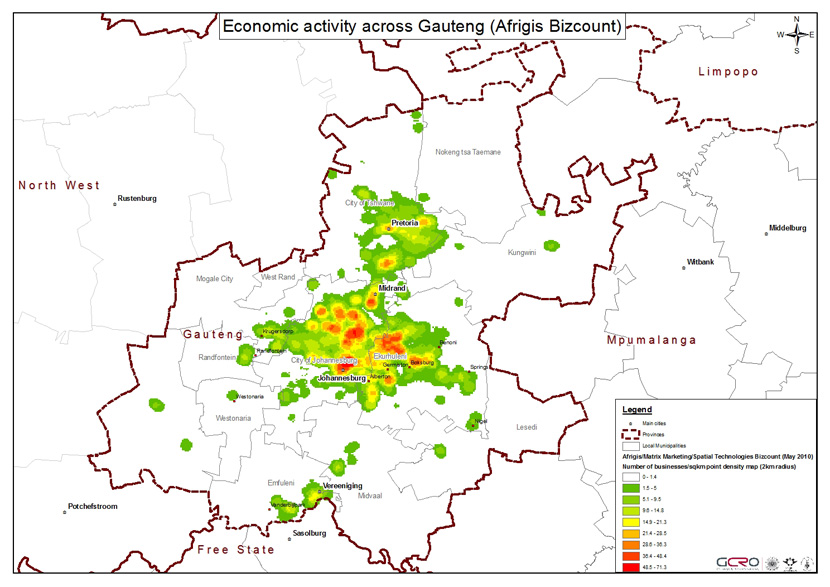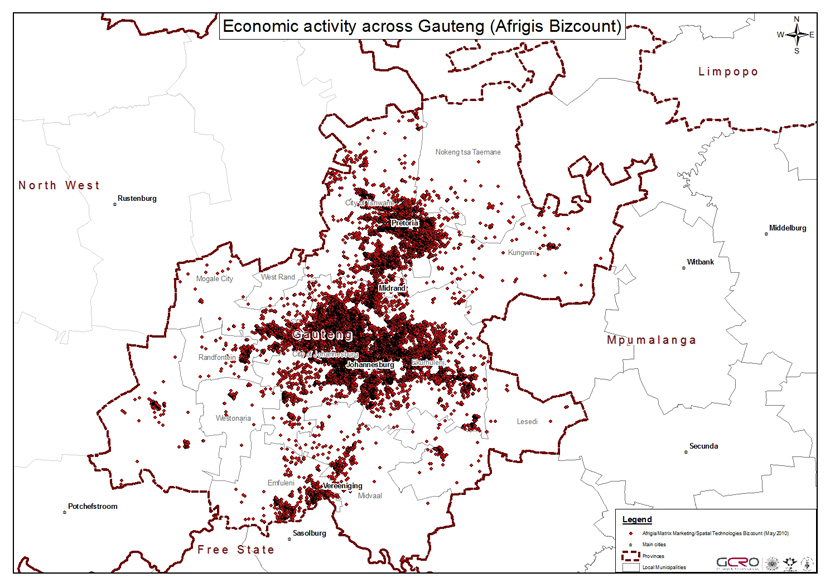
| the spatial economy |
One of the enduring challenges left by apartheid is the spatial distortion in the distribution of economic opportunity. In some parts of the region, where the market was historically allowed to operate normally, the spatial location of home and work followed natural patterns seen in cities across the world. However, in other parts, racially based planning forced millions of people into dormitory townships where laws also prevented firms from being set up. Workers had no choice but to make the long journey to work in mines and industries each morning, often by means of inadequate public transport. This distorted pattern of economic activity has continued in the post-apartheid period. Of course, some townships now have shopping malls, and there has been some government-led investment in economic spaces between dormitory areas and old economic cores, such as in the case of the automotive supplier park at Rosslyn, between Soshanguve/Mabopane and the Pretoria CBD. But on the whole not much economic activity has spread to the poorer parts of the city-region. This is clear in the maps below. The first shows the total number of firms (about 67 000) on AfriGIS/Matrix Marketing’s BizCount database, with each firm being represented by a dot. The second map uses this data to generate a hotspot analysis of the total number of firms per square kilometre, using a 2km radius scale. The map illustrates clearly that businesses concentrate in the centre of the province, clustering into a number of key nodes. It is also clear that there is much less economy in the south, far north, and outlying parts of the city-region. In some respects the challenge has been compounded as work has decentralised away from old commercial cores into office-parks in the suburbs. The evidence suggests that for the wealthy this means shorter home-to-work trips, but for those still in the townships the commutes are now often longer. While much attention is being given to the problem of bringing ‘jobs closer to people’ and ‘people closer to jobs’, the solutions are not easy to implement. Restructuring the space economy of the region will take time. |
| distribution of business across Gauteng |
|
GCRO GIS analysis based on AfriGIS/MatrixMarketing BizCounts database (2010) |
| heat-map of number of businesses per square kilometre across Gauteng |
 |
GCRO GIS analysis based on AfriGIS/MatrixMarketing BizCounts database (2010) |

